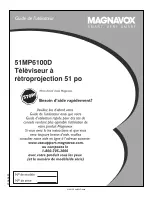
10
11
Capturing the velvety texture of films
— Full HD SXRD panel
Delicate image rendition without
the “Screen Door Effect”
One of the most difficult image factors to
reproduce is smoothness. Most projectors
provide video images that look as though
they were shown through a screen door.
This is called the “Screen Door Effect” — an
effect caused by the fact that the image is an
artifact of pixel construction.
When fixed-pixel projection devices display
an extended picture, you notice the grainy
“mesh” effect on the picture. This is because
a black matrix, like the lattice pattern of a
screen door, covers the pixel area to prevent
the light source from shining through to the
control electronics, which surround each
pixel.
The reflective liquid crystal display panel
“SXRD (Silicon X-tal Reflective Display)”
installed in this projector places the control
electronics behind each pixel as a reflective
device. Because of this, the space between
each pixel narrows by 0.35 µm, the opening
increases by 92 % of the LCD panel, and the
lattice part of the “screen door” decreases
by 8 %, which helps achieve a high open
area ratio.
Illustration of the “mesh” effect
— A comparison using the same screen image
������
������
SXRD
1920×1080 dot,
92% open area ratio
Conventional
transmissive LCD
1366×768 dot,
50% open area ratio
The space between each
pixel is narrow and the pixel
pitch is small.
“SXRD” is a trademark of Sony Corporation.
Smooth rendering of fast-moving
images
Conventional projectors often display swift
images with lasting after-effects that destroy
sharpness because the LCD displays cannot
respond fast enough to switching signals.
This projector, utilizing SXRD technology,
makes the very rapid 5 milli-second response
time a reality. This improvement enhances
crisp and vivid image reproduction, even
from video sources containing fast-moving
images.
Excellent contrast from white to
black
— 12-bit panel driver
The 12-bit panel driver in this projector, used
at the final stage of digital signal processing,
compensates with a high degree of accuracy,
ensuring the accurate delivery of the high
2000:1 contrast level. As a result, a linear
contrast from white to black, with intense,
velvety darkness is successfully reproduced.
Authentic reproduction of high
resolution sources
An SXRD panel has about 2,000,000 enabled
square pixels (1920 × 1080 pixels), about
twice as many as other high-end projectors.
For this to be achieved, both the size of each
individual pixel and the space between pixels
has been minimized to a pitch of 9 µm within
an image area measuring a mere 0.78 inches
across. The projector authentically
reproduces breathtaking pictures from HD
(High Definition) signal sources, which can
be enjoyed free of the “mesh” effect.
Superb high-contrast black
The SXRD panel offers high quality contrast.
The thin liquid crystal cell gap, narrow
inter-pixel spacing, and “Vertically Aligned
Liquid Crystal” materials, whereby the liquid
crystal molecules are aligned perpendicular
to the cell substrates, develop a high panel
contrast of 3000:1. Combining panels with
good driving voltages and high quality optical
properties that also provide a contrast of
3000:1, this projector offers a high contrast
level of 2000:1. The 2000:1 ratio means that
black is 1/2000 as bright as white.
Also, the optical unit and drive circuit make
full use of the developed dynamic contrast
range. This projector represents an
approximately 2 to 3 fold increase in contrast
over conventional projector contrast levels,
achieving the “coal black” quality available
only in films. These advances have facilitated
the achievement of outstanding cinematic
quality, providing the ultimate movie-viewing
experience at home.
Difference between 12-bit
and 10-bit correction
Input
O
u
tp
u
t
10-bit
correction
12-bit
correction
Overview







































